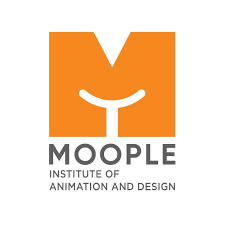Table of Contents
# Understanding Graphic Design Courses: Building Blocks of Creativity
# Key Benefits of Enrolling in Graphic Design Courses
Visual communication has become crucial in today’s fast-paced digital era. The power of appealing images is clear in all areas of design, including branding, advertising, web development, and social media. People can use graphic design courses to develop their technical proficiency and creative thinking while immersing themselves in the exciting world of visual storytelling.
Understanding Graphic Design Courses: Building Blocks of Creativity
Courses in graphic design offer a thorough grounding in design concepts, color theory, typography, and layout. Through these courses, aspiring designers can develop their aesthetic expression and strategic thinking skills, creating visually appealing designs that convey a message.
Key Benefits of Enrolling in Graphic Design Course
Individuals that enroll in graphic design courses gain the skills, knowledge, and competitive edge necessary for a successful design job. For ambitious designers, graphic design courses provide priceless advantages and expertise.
- Enhanced Creativity: Practical assignments and conceptual difficulties in graphic design courses stimulate creativity.
- Professional Skill Development: Taking graphic design classes helps students develop their software, typography, and visual communication skills.
- Industry-Relevant Knowledge: Courses offer design trends, resources, and industry standards information.
- Portfolio Refinement: Students can develop a solid portfolio containing various design projects.
- Career Opportunities: Courses in graphic design give access to many marketing, advertising, and digital media positions.
Choosing a Graphics Designer Course
When pursuing a career in graphic design, selecting the right graphics designer course is pivotal for your success. This decision will significantly impact your skill development and future opportunities. Here are five crucial factors to consider when choosing a graphics design course:
- Accreditation and Reputation: Opt for courses offered by accredited institutions with a strong reputation. Accreditation ensures the course meets quality standards and is recognized by employers in the industry.
- Curriculum and Specializations: Examine the course curriculum to ensure it covers essential graphic design principles, software proficiency, and design theory. Look for courses offering specialized tracks aligning with your interests, such as web design, branding, or illustration.
- Experienced Instructors: Highly experienced instructors can provide invaluable insights and mentorship. Research the instructors’ backgrounds to ensure they possess real-world graphic design experience and teaching expertise.
- Hands-on Projects and Portfolios: A practical approach is essential in graphic design. Choose a course that emphasizes hands-on projects, as they help you apply theoretical knowledge and build a strong portfolio—a vital asset in the design industry.
- Industry Connections and Internships: Courses that offer networking opportunities, industry connections, and internship placements provide a stepping stone into the professional world. Building a network while studying can lead to job opportunities upon graduation.
Types of Graphic Designing Courses
Graphic designing courses offer a dynamic pathway to unlock your creative potential and delve into the world of visual communication. These courses cater to different aspects of graphic design, equipping individuals with skills in high demand across various industries. Here are five types of graphic designing courses to consider:
- Visual Identity and Branding Courses: Discover the art of creating compelling brand identities through courses focused on logos, typography, color psychology, and overall brand aesthetics. These courses empower you to build memorable and impactful brands.
- Web and UI/UX Design Courses: Learn the intricacies of designing for the digital realm with courses covering website layout, user interface (UI), and user experience (UX) design. These courses are essential for crafting user-friendly digital experiences.
- Print and Editorial Design Courses: Immerse yourself in the world of print media by mastering layout design, typography for publications, and print production techniques. These courses provide a solid foundation for designing magazines, books, and marketing materials.
- Motion Graphics Courses: Combine graphic design with animation through motion graphics courses. Explore creating dynamic visuals for videos, advertisements, and multimedia presentations using software like Adobe After Effects.
- Illustration and Digital Art Courses: Unleash your artistic side with illustration and digital art courses that teach you to create visually stunning graphics, characters, and illustrations using digital tools. These courses are perfect for those interested in storytelling through visuals.
In a world driven by visuals, graphic design courses provide a gateway to unleash creativity and wield the power of visual communication. With a curriculum designed to nurture artistic skills and technical prowess, aspiring designers can embark on a transformative journey. From foundational principles to advanced techniques, these courses empower individuals to shape the aesthetics of tomorrow’s world. So, if you’re ready to dive into the realm of creativity, consider enrolling in a graphic design course and embark on a path of limitless possibilities.

